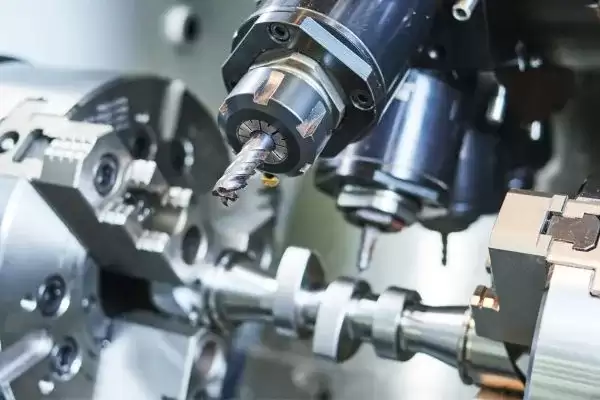
May 13,2024
Manufacturing something is no small feat, and if you are a beginner in manufacturing, selecting the right machinery can be a challenging task. Most of the manufacturing today is done using the CNC machines. However, there are various types of CNC machines, and it is easy to get confused as to which CNC machine would be suitable for your requirements. The misconceptions surrounding CNC machines are also quite abundant. On the one hand, it is believed that a CNC machine can churn out any type of part with just a press of a button, and the operator does not need any complex knowledge before they start operating it. On the other extreme is the view that CNC is too complex and requires heavy investment, which is simply not worth it. In this blog, we will take a look at various misconceptions about CNC manufacturing to ease your fears so that you can set up your manufacturing business with confidence.
When you look at the advertisements for CNC machine companies, you will get the impression that operating a CNC machine and using it to manufacture products is the easiest thing in the world. The latest machining system systems have some of the most advanced features like automatic tool selection, visual programming systems and automatic tools that makes machining easier. But the operator still needs to have an in. depth knowledge about how to troubleshoot the CNC machine software. There are a lot of training courses for educating machine operators, and any newbie should avoid diving into manufacturing without receiving adequate training. Every product is different and the new users should take assistance from experience people in the machine operation field.
Another popular erroneous belief regarding many inexperienced manufacturers is that all that matters for ensuring a smooth manufacturing process is the initial machine settings, and once that is done, the machine will keep on working without any problems for a long time. Although modern CNC machines have evolved a lot when it comes to features and tools still, during operations, tools can get damaged, the workpiece can shift, or mishaps can happen. When that occurs, human intervention is needed to set the process right and correct the manufacturing procedure.
Modern CNC machines come equipped with a CAD system, which makes calculating the production cycle time effortless. You can set the runtime of tools. Real-time tracking of a machine operation can also be executed. These features help in precisely predicting a particular order completion time. But no matter how accurate it is, miscalculation can still occur when there is a breakdown during operation. It is best to keep this possibility in mind, and other ways can also delay production time, so it is better to be prepared always.
The CNC machine uses a computer code to execute machine operations in a series of steps. This computer code, known as G code, is a series of letters and numbers, and this code language communicates with the machine during the processing of any component. With advancements in technology most CNC machines use visual aid system called 3D CAM for tools settings, cutting paths and production cycle mapping. With the popularity of visual systems, there is a mistaken belief that Gcode has become unnecessary. But this mistaken belief is wrong. The CAM software runs on Gcode, and a machine operator should have adequate knowledge of Gcode for scenarios when ordinary settings through a CAM are simply not enough for precise manufacturing.
A false belief regarding CNC that is rooted in fear is that CNC machining is very expensive. But this cannot be further from truth: CAD/CAM software and CNC cutting-edge features have made setup times really quick, and the high-speed cycle times have skyrocketed machine efficiency, and this has minimized per unit cost for mass manufacturing of products. Although running CNC operations for small quantities is still costly, it is no longer true for large orders.
Dispelling myths surrounding CNC manufacturing is essential for fostering a clearer understanding of its capabilities and limitations. By addressing misconceptions about factors such as cost, complexity, and adaptability, individuals and industries can make informed decisions about incorporating CNC technology into their production processes. Emphasizing the versatility, precision, and efficiency of CNC manufacturing helps to highlight its role as a cornerstone of modern manufacturing. Through education and awareness, we can debunk myths, harness the full potential of CNC technology, and propel innovation in manufacturing to new heights. Additionally, forging strong partnerships with reliable CNC machine parts suppliers ensures seamless integration of cutting-edge technology into production lines, further enhancing efficiency and reliability.